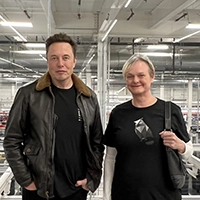How Long Does It Take To Charge An Electric Car?
10/9/2023 / Gail Alfar
Every charging experience you have with your EV should be a great one.
Electric vehicle technology is advancing rapidly, enabling faster and safer charging. Whether you're a prospective buyer or a current owner, understanding vehicle charging times is crucial. I'll share my experiences and practical details, from convenient home charging to the speed of fast charging stations, to help you understand electric car charging times.
Charging Levels and Speeds
Electric vehicle charging is categorized into three levels: Level 1, Level 2, and Level 3 (DC Fast Charging). Each level offers different charging speeds and is suited for different scenarios:
Level 1 Charging: This uses a standard household outlet (120V) and is the slowest option. It's useful for overnight charging at home. Level 1 charging can provide around 2 to 5 miles of range per hour of charging. If you drive less than 30 to 40 miles per day, Level 1 charging using a Moblie Connector should meet your needs.In my case, where I drive over 70 miles per day, Level 2 Charging is necessary.
Level 2 Charging: This requires a dedicated 240V charging station, which can be installed at homes, workplaces, and public charging stations. Level 2 charging offers faster speeds, providing around 10 to 60 miles of range per hour.
Level 3 Charging (DC Fast Charging): DC fast chargers are commonly found along highways and in commercial areas. They use high-voltage DC power to deliver a rapid charge, allowing for 60 to 80% charge in around 20 to 30 minutes, depending on the EV model.
Factors Affecting Charging Time
Several factors influence the time it takes to charge an electric car including battery capacity, charging station power output, and the state of charge.
Battery Capacity: The larger the battery, the longer it takes to charge. However, EVs with larger batteries generally offer longer driving ranges, which can mitigate the need for frequent charging. Some EVs, like the Tesla Model S, charge a little faster than other EVs.
This chart shows how charging speeds in Tesla vehicles vary by model.
Vehicle
| Level 3 (DC charging, or supercharging) |
Model S | Up to 200 miles in 15 minutes |
Model 3 | Up to 175 miles in 15 minutes |
Model X | Up to 175 miles in 15 minutes |
Model Y | Up to 162 miles in 15 minutes |
Accessed Tesla, Inc. on 8.20.2023
State of Charge (SOC): Charging times are faster when the battery is at a lower state of charge. As the battery approaches full capacity, charging slows down to prevent overcharging and battery degradation.
Charging Infrastructure: The charging station's power output impacts charging speed. Higher-power charging stations, like Level 3 DC fast chargers, offer faster charging compared to lower-power Level 1 or Level 2 chargers.
Vehicle Technology: Some EVs are equipped with advanced battery management systems that can optimize charging rates based on various conditions, enhancing efficiency and safety. Tesla vehicles optimize charging time by preconditioning the battery for faster charging. To precondition a battery for charging in a Tesla, map your vehicle’s navigation system to the chargers so that it will know to precondition the battery as you approach the charging station. This feature comes free with every Tesla and other EVs may have it soon.
Temperature: Charging speeds can influenced by temperature. High or low temperatures can lead to slower charging due to battery management systems adjusting to preserve battery health.
Charging Profiles: Some EVs offer customizable charging profiles that allow users to adjust charging speeds based on their immediate needs. For instance, users might prioritize faster charging during a road trip and slower charging for everyday use.
Planning for Efficient Charging
Optimizing the charging process involves understanding the technical aspects and considering real-world scenarios:
Home Charging: Installing a Level 2 charging station at home will enable faster and more convenient charging, and ensure that the electrical infrastructure can handle the load. Home charging can take place at night when utility rates are often reduced.
NOTE: Tesla has developed a Level 2 Wall Connector that is compatible with charging any EV.
I have two Tesla Wall Connectors at home, one for the Model Y and one for the Model 3. Their user-friendliness is impressive, and I appreciate their elegant appearance in the garage. When planning on installing a home charging station, always call an electrician.
Workplace Charging: Collaborating with employers to implement workplace charging infrastructure can make charging easier for employees that may live in apartments that do not offer charging. Vehicles can charge while at work. I have a family member that works where there are Level 2 Chargers installed and employees are delighted to drive home in a charged EV after a day of work.
Public Charging Networks: These networks are expanding, improving, and providing convenience for long-distance travel. Tesla has a Level 3 Supercharging Network which boasts a 99.95% uptime rate and will also open up to other EVs in January 2024. At time of publishing this article, the following carmakers have announced they are adopting the North American Charging Standard (NACS), enabling access to Tesla’s expansive Supercharger network:
Honda/Acura
Ford
Mercedes
General Motors
Nissan
Volvo
Polestar
Fisker
Rivian
Drive Charged!
Switching to an EV saves me many hours a year on driving to gas stations and refueling. Unlike gas pumps, there are many attractive options for charging EVs.
Whether I charge my EV using a Level 1, 2, or 3 charger, the experience is always easy, seamless, and a delight.
Posted in


